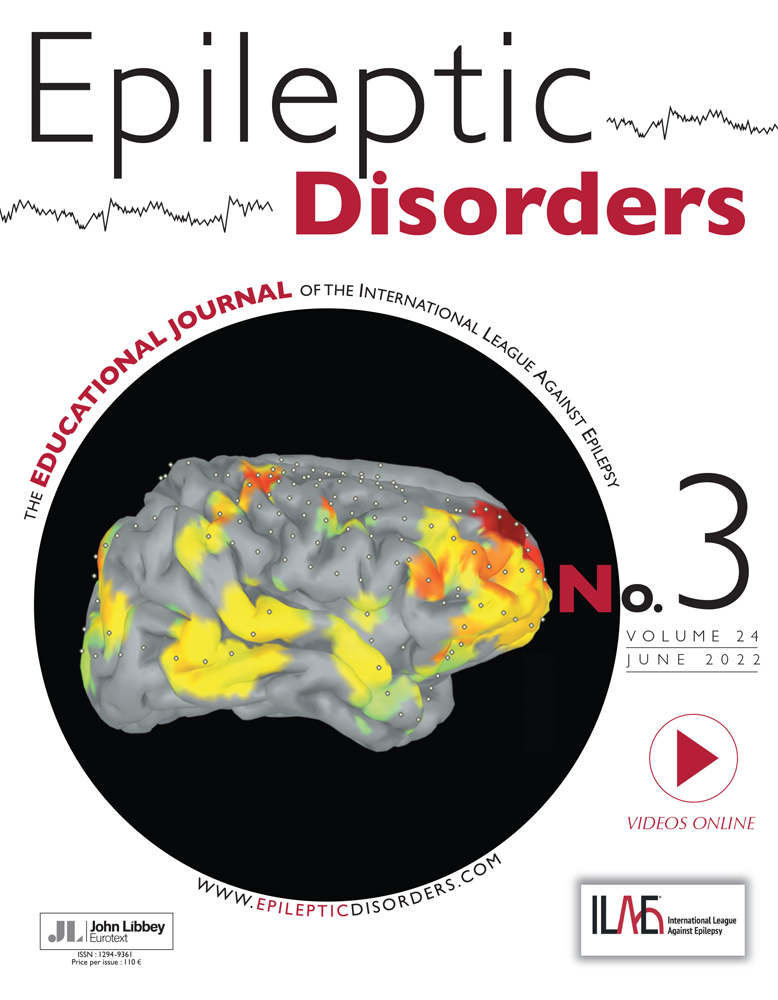Intractable startle epilepsy in Schuurs – Hoeijmakers syndrome
Kento Ohta
Division of Child Neurology, Department of Brain and Neurosciences, Faculty of Medicine, Tottori University, Yonago, Japan
Search for more papers by this authorCorresponding Author
Tohru Okanishi
Division of Child Neurology, Department of Brain and Neurosciences, Faculty of Medicine, Tottori University, Yonago, Japan
Comprehensive Epilepsy Center, Seirei Hamamatsu General Hospital, Hamamatsu, Shizuoka, Japan
Correspondence: Tohru Okanishi Division of Child Neurology, Department of Brain and Neurosciences, Faculty of Medicine, Tottori University, 36–1 Nishi-cho, Yonago, Tottori 683–8504, Japan >[email protected]> <[email protected]>Search for more papers by this authorSotaro Kanai
Division of Child Neurology, Department of Brain and Neurosciences, Faculty of Medicine, Tottori University, Yonago, Japan
Search for more papers by this authorTetsuya Okazaki
Division of Clinical Genetics, Tottori University Hospital, Yonago, Japan
Search for more papers by this authorAyataka Fujimoto
Comprehensive Epilepsy Center, Seirei Hamamatsu General Hospital, Hamamatsu, Shizuoka, Japan
Search for more papers by this authorYoshihiro Maegaki
Division of Child Neurology, Department of Brain and Neurosciences, Faculty of Medicine, Tottori University, Yonago, Japan
Search for more papers by this authorKento Ohta
Division of Child Neurology, Department of Brain and Neurosciences, Faculty of Medicine, Tottori University, Yonago, Japan
Search for more papers by this authorCorresponding Author
Tohru Okanishi
Division of Child Neurology, Department of Brain and Neurosciences, Faculty of Medicine, Tottori University, Yonago, Japan
Comprehensive Epilepsy Center, Seirei Hamamatsu General Hospital, Hamamatsu, Shizuoka, Japan
Correspondence: Tohru Okanishi Division of Child Neurology, Department of Brain and Neurosciences, Faculty of Medicine, Tottori University, 36–1 Nishi-cho, Yonago, Tottori 683–8504, Japan >[email protected]> <[email protected]>Search for more papers by this authorSotaro Kanai
Division of Child Neurology, Department of Brain and Neurosciences, Faculty of Medicine, Tottori University, Yonago, Japan
Search for more papers by this authorTetsuya Okazaki
Division of Clinical Genetics, Tottori University Hospital, Yonago, Japan
Search for more papers by this authorAyataka Fujimoto
Comprehensive Epilepsy Center, Seirei Hamamatsu General Hospital, Hamamatsu, Shizuoka, Japan
Search for more papers by this authorYoshihiro Maegaki
Division of Child Neurology, Department of Brain and Neurosciences, Faculty of Medicine, Tottori University, Yonago, Japan
Search for more papers by this author
Supporting Information
| Filename | Description |
|---|---|
| epd212550-sup-9001.pptxapplication/pptx, 72.3 KB | slides |
Please note: The publisher is not responsible for the content or functionality of any supporting information supplied by the authors. Any queries (other than missing content) should be directed to the corresponding author for the article.
References
- 1Schuurs-Hoeijmakers JH, Oh EC, Vissers LE, Swinkels ME, Gilissen C, Willemsen MA, et al. Recurrent de novo mutations in PACS1 cause defective cranial-neural-crest migration and define a recognizable intellectual-disability syndrome. Am J Hum Genet 2012; 91: 1122–7.
- 2Miyake N, Ozasa S, Mabe H, Kimura S, Shiina M, Imagawa E, et al. A novel missense mutation affecting the same amino acid as the recurrent PACS1 mutation in Schuurs-Hoeijmakers syndrome. Clin Genet 2018; 93: 929–30.
- 3Schuurs-Hoeijmakers JH, Landsverk ML, Foulds N, Kukolich MK, Gavrilova RH, Greville-Heygate S, et al. Clinical delineation of the PACS1-related syndrome – report on 19 patients. Am J Med Genet A 2016; 170: 670–5.
- 4Stern D, Cho MT, Chikarmane R, Willaert R, Retterer K, Kendall F, et al. Association of the missense variant p. Arg203Trp in PACS1 as a cause of intellectual disability and seizures. Clin Genet 2017; 92: 221–3.
- 5Engel Jr J, International League Against Epilepsy (ILAE). A proposed diagnostic scheme for people with epileptic seizures and with epilepsy: report of the ILAE Task Force on Classification and Terminology. Epilepsia 2001; 42: 796–803.
- 6Yang Z, Liu X, Qin J, Zhang Y, Bao X, Wang S, et al. Clinical and electrophysiological characteristics of startle epilepsy in childhood. Clin Neurophysiol 2010; 121: 658–64.
- 7Tibussek D, Wohlrab G, Boltshauser E, Schmitt B. Proven startle-provoked epileptic seizures in childhood: semiologic and electrophysiologic variability. Epilepsia 2006; 47: 1050–8.
- 8Saeki K, Saito Y, Sugai K, Nakagawa E, Komaki H, Sakuma H, et al. Startle epilepsy associated with gait-induced seizures: Pathomechanism analysis using EEG, MEG, and PET studies. Epilepsia 2009; 50: 1274–9.
- 9Fernández S, Donaire A, Maestro I, Seres E, Setoain X, Bargalló N, et al. Functional neuroimaging in startle epilepsy: involvement of a mesial frontoparietal network. Epilepsia 2011; 52: 1725–32.
- 10García-Morales I, Maestú F, Pérez-Jiménez MA, Elices E, Ortiz T, Alvarez-Linera J, et al. A clinical and magnetoencephalography study of MRI-negative startle epilepsy. Epilepsy Behav 2009; 16: 166–71.




